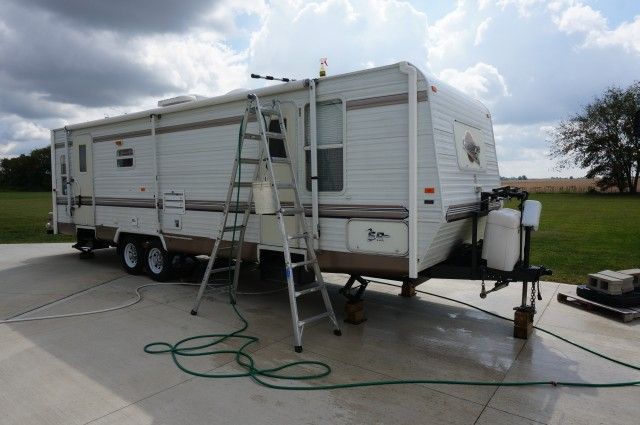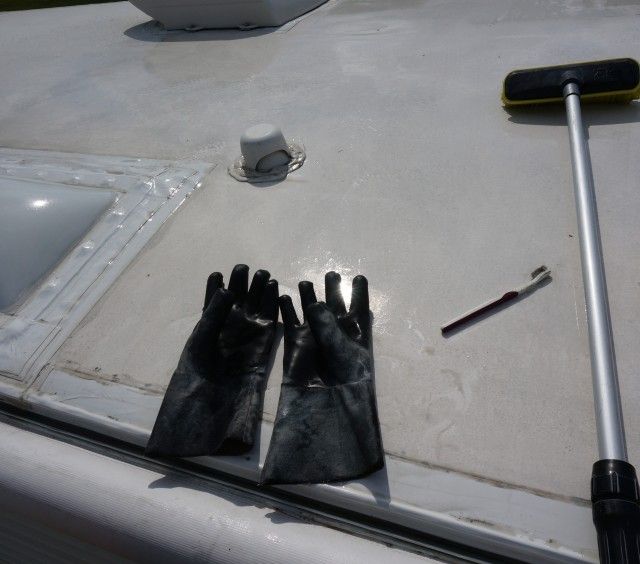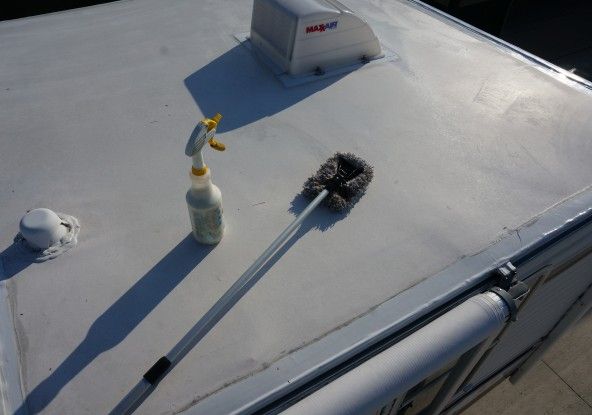Hi Folks,
We have been out camping and just catching back up on this roof cleaning topic.
It seems there is an opinion that washing the roof is a waste of time, it does not need to be done or is actually damaging to the roof. This conflicts with what I have found.
I asked this question a number of replies ago about if anyone found a manufacture or a rubber “camper” roof that stated to not wash the roof as it would damage the roof? As of today no one yet has been able speak to a brand that says that nor link to it. Maybe it will come yet.
JBarca wrote:
Hi, trying to learn about how you came to learning this.
I'm not following this thought process. Have you found a manufacture of a rubber roof membrane that has stated to not "clean" the roof? If so, please link their instructions that state this. May learn something new from it.
Dicor is who made my EPDM roof. Read all of it including the UV protectent at the end. This is their recommendation. Dicor EPDM Rubber Roofing Care
I took Huntingdogs lead and did some reading on the Carlise roofing site. They make commercial buildings rubber roofs. These types of rubber roofs seem to be different then the RV camper rubber roof. First off, they offer black rubber and white rubber pending what state you live in as buildings in cool climates can benefit from the added heat to the building from using black rubber. White rubber is used in hotter climates as the added heat load becomes a problem with the air conditioning. They also make many different grades and thickness along with warranty periods. Some commercial rubber roofs can have a 30 year warranty, others are 5 year. Point is, they are not all equal and have special purposes of the rubber material. Do not assume all rubber roofs are created equal.
Somehow, it seems some folks think these commercial rubber roofs are just like a camper rubber roof. I’m sure there are some similarities but I would not go as far as thinking they are the same.
Keeping an open mind, I did some more digging and ended up calling Dicor direct to confirm some things. Again, this is for my EPDM rubber roof made to Dicor specifications. I do not know what brand or type you have.
My camper was built in Nov, 2003. Here is a copy out of my owners manual. A cut sheet from Dicor on what they declare is proper maintenance to the roof. This was 14 years ago.
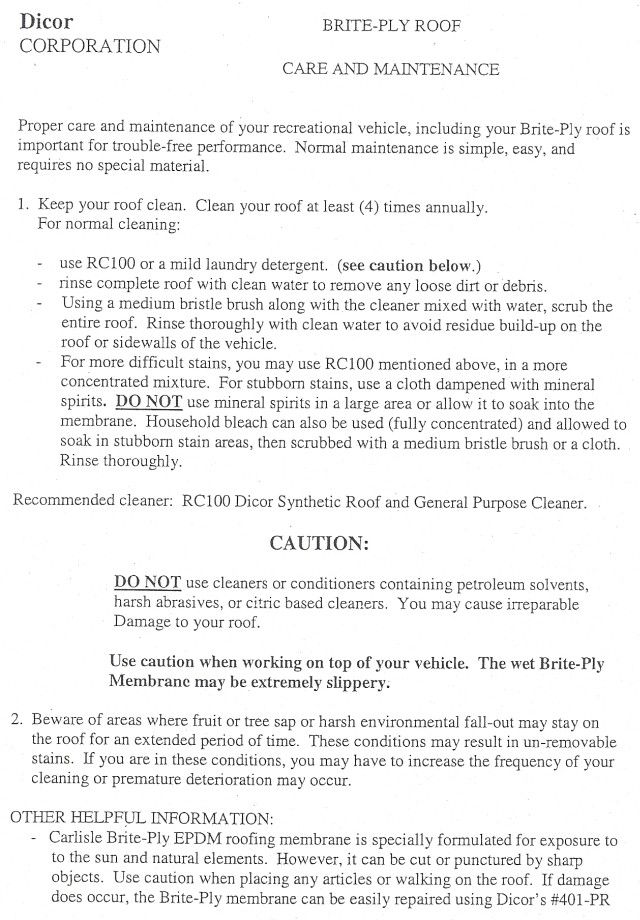
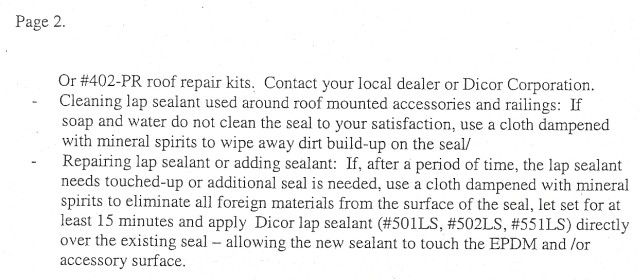
That recommendation 14 years ago in my owners manual aligns with the same instructions found today on the Dicor web site. They declare proper care is needed for the roof to be in warranty which is 12 years and they state the roof is good for 20 years if proper care is done that they recommend.
So I have been following their recommendation for 14 years using laundry soap with a medium bristle brush and washing the roof 3 to 4 times a year. I myself added the 303 UV protectant treatment that is now is part of the web site care instructions that states using a UV inhibiter is acceptable. The instructions also talk to bleaching if needed to remove mold.
My camper has aluminum siding. It also has a coating to make it more scratch and dent resistant called Krystal Kote. Some brands of campers use it, some don’t. I find it really helps on the dents and scratches and even helps against hail damage as compared to non coated siding.
I also know that when my roof gets dirty, the black streaks start getting really bad. And cleaning the camper is tedious getting rid of them. There is a definite difference in cleaning fiberglass sided camper then an aluminum camper. The Krystal Kote siding may even make it a little worse than plain aluminum siding as the coating has small pockets of holes and the black streaks get locked in those holes. If I did not clean my roof, the upkeep of cleaning the black streaks off the camper sides is a lot worse. It is a reason that aligns to keep the roof clean.
I have replaced and repaired enough Dirco roofs on other campers to have a few samples of virgin roof material. This Dicor rubber is 0.040” total thickness. It is made up of approximately a 0.016” black layer bonded to a 0.024” white layer. I sanded on a belt sander the white layer to just touch the black layer and measured it. Yes, I had to sand it off it is not that easy to get off. See here. There is some error in this but this gives us the big picture of the make up.
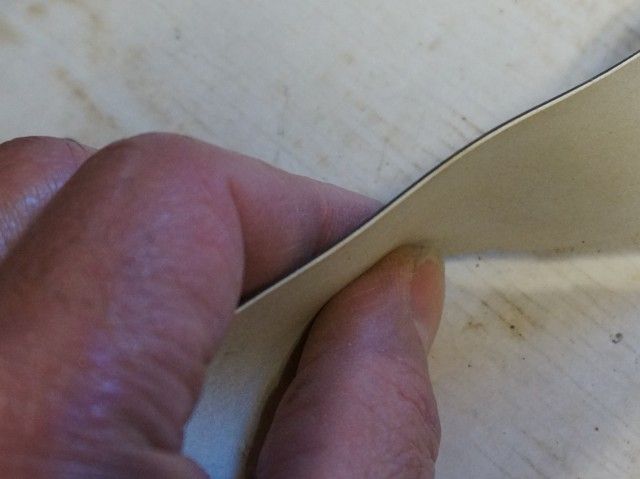
0.040" total thickness
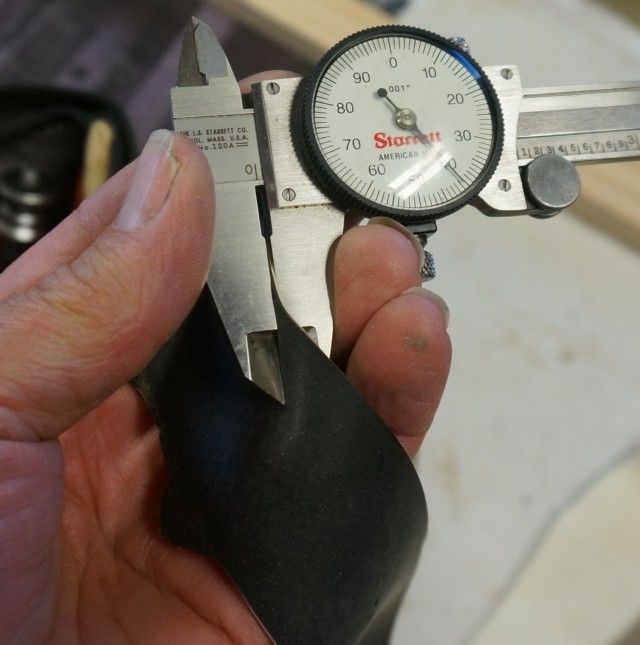
0.016" approx. black layer thickness. I sanded 2 spots to get an average of the black layer thickness.

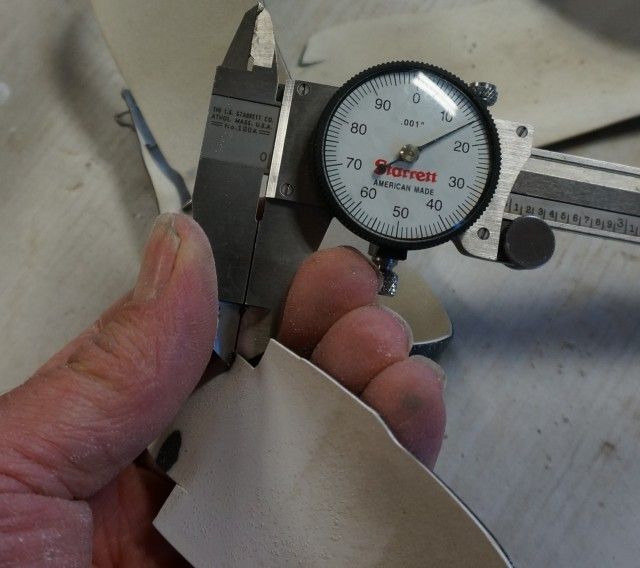
I believe the actual waterproof barrier is the black layer. The white layer is about reflectivity and being a UV protector to the black layer. The camper roof has 0.016” thick black material. Not very much. As a comparison to commercial roofing, the all black rubber membranes are much thicker, 0.045 and 0.060 are some and they have longer warranties too.
https://www.carlislesyntec.com/view.aspx?mode=media&contentID=1183The white covered EPDM, I do not know the layer make up only the total thickness. Some are 0.060” and some are 0.090”
https://www.carlislesyntec.com/view.aspx?mode=media&contentID=1179According to the commercial maintenance and care instructions Carlisle recommends to clean the white EPDM every 2 years with mild detergent to maximize reflectivity.
https://www.carlislesyntec.com/view.aspx?mode=media&contentID=1127Bottom line, the commercial EPDM rubber roofs are different then an RV camper EPDM rubber roof. Why are folks comparing them to be the same?
My call to Dicor Products confirmed, they want you to clean the roof. They state 4 times a year using the method and cleaning materials they recommend. They stated the dirt on the surface changes the reflectivity of the roofing. A dirty roof also makes it harder to inspect the caulking accurately. I tried to get more out of them about if cleaning was a bad thing and they responded several times, follow the care instructions as they have posted. You are not damaging the roof by following their instructions.
I asked about the warranty and if the care instructions of cleaning were not followed would this affect the 12 year warranty? The answer was yes, not following the care instructions can have a negative effect on accepting a warranty claim.
So in writing, across at least the last 14 years, Dicor wants you to clean the roof by using their method. So where does all this talk of doing damage to your Dicor Brite Ply EPDM rubber roof come from by cleaning it?
RV’ing is about choices as has been said. You can choose to follow the manufactures recommendations about their products to meet their warranty or you can chose something else. Your choice.
So I chose to follow the instructions and post my 14 year data, maybe it might help you, maybe not. I hoped it was helpful.
Thanks
John
